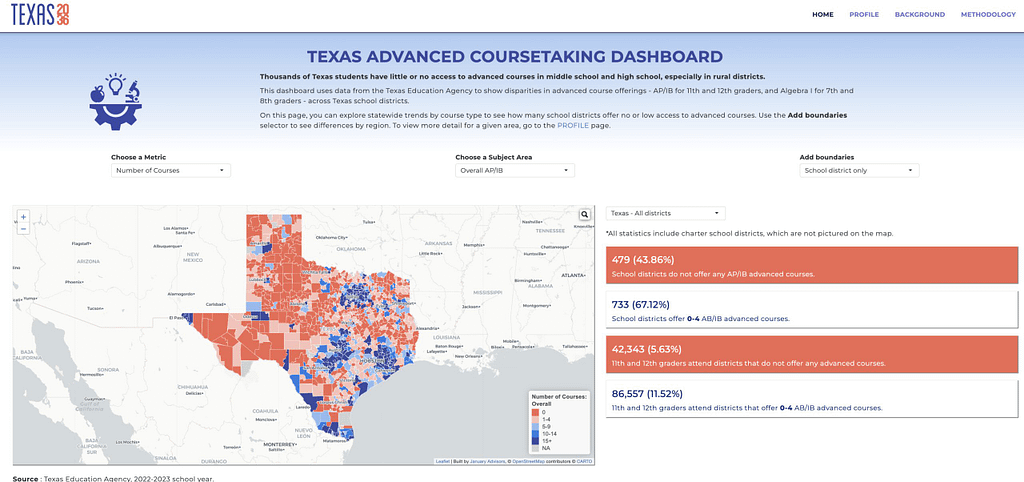Enrollment in Algebra I in middle school or AP/IB courses in high school, regardless of actual exam scores, is a large indicator of post-secondary enrollment and success for students.
As more jobs across the country require post-secondary degrees and credentials, these types of courses will play an even more important role as bridges to college and — ultimately — good jobs and economic opportunity.
What we know:
Currently, rural school districts are disproportionally unable to offer students these advanced courses.
Our analysis of the most recent Texas Education Agency data reveals:
- 44% of Texas school districts do not offer any AP/IB courses
- 42,787 11th and 12th graders attend districts that do not offer any AP/IB courses — 86,913 attend districts offering 4 or fewer
- 49% of districts do not offer any AP/IB courses in STEM
- 36% of districts do not offer Algebra I in 7th and 8th grades

What the tool does
The Advanced Coursetaking Dashboard allows policymakers to see where the discrepancies currently exist in Texas school districts.
The dashboard allows the user to see which districts offer Algebra I to their 7th and 8th graders and AP/IB courses, by subject, to their high schoolers. It provides both statewide data, as well as a breakdown by Education Service Center region.
With the dashboard, you can view statewide data, as well as a breakdowns by State House and Senate districts and Education Service Center region.

Why change matters:
Rural Texas students will continue to get left behind if the state does not work to ensure that they have the same access to rigorous advanced coursework that their urban and suburban peers have.
For some rural districts, it often makes little financial sense to offer advanced courses to a small number of students. Access to highly trained teachers and the cost of allocations in schools creates additional strain on rural districts to provide these courses.
What can be done:
High-quality online programs can solve this problem and expand access for rural students around the state. To meet Texas’ future workforce needs and ensure that every student has the opportunity to succeed, we must work to expand access to rigorous coursework to all middle and high school students.
The Texas Commission on Virtual Education is pursuing innovative solutions to close access gaps. Learn more.



























